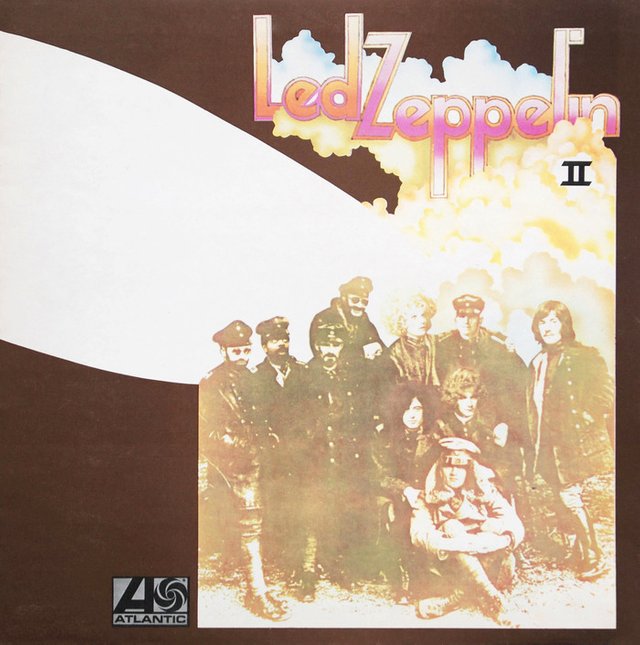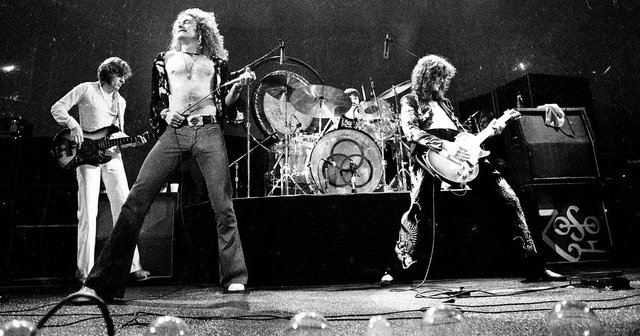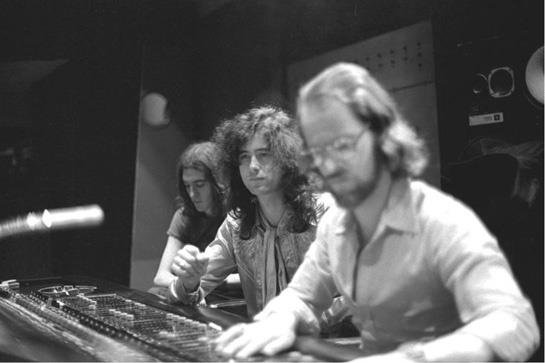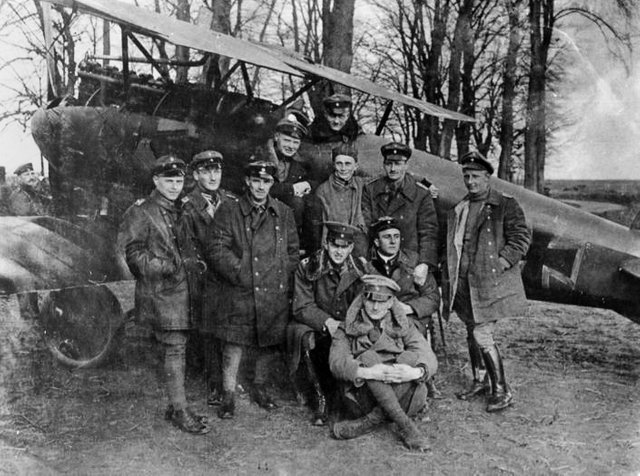Led Zeppelin: Part 3, Led Zeppelin II
After the success of their debut album, the pressure was on Led Zeppelin to record another one—even if they were touring fulltime.

Image credit
In Led Zeppelin: Part 2, The First Album, I wrote about how Led Zeppelin's first album was released during their first tour of the US. The album sold well and legions of fans showed up at their concerts
Finding the time
After the band got back from their successful first tour of the US in February 1969, they got straight to work planning their next tour. It was a 35-show tour of the UK and Scandinavia, from 1 March to 17 April 1969. Led Zeppelin's first album was only released in the UK late in March so they kept building the momentum.
Atlantic Records were pressing their band to produce another album, to capitalise on their early popularity and to catch the Christmas market. But there was hardly any time in their hectic schedule to record an album, let alone to come up with and rehearse new material. No sooner had they played their final gig in the UK, when they embarked on their second North American tour—29 concerts in the US and Canada from 28 April to 31 May 1969.
But somehow they did it. It meant that they couldn't be tied down to spending long periods in a recording studio so they literally had to do it on the road. They started off recording it in April at London's Olympic Studios. Whole Lotta Love was one of the first tracks they worked on, built around a riff Jimmy Page had come up with while jamming. The lyrics were taken straight from a 1962 Muddy Waters single, You Need Love.
The band took the tapes with them as they toured. Whole Lotta Love was finished in New York, engineered Eddie Kramer*. It was Kramer who helped put together the crazy, psychedelic middle bit, with slide guitars played backwards, female orgasms and napalm bombs going off.

Led Zeppelin on stage, 1969. Image credit
The tour must go on
They came back to do the UK tour in June and then back again for another North American tour—48 shows between 5 July and 31 August 1969. (They were invited to play at Woodstock in August but declined. According to Peter Grant, “We were asked to do Woodstock and Atlantic were very keen, and so was our US promoter, Frank Barcelona. I said no because at Woodstock we'd have just been another band on the bill.”)
They took every opportunity to work on the album. They would record in studio hallways and often had to resort to patching sounds together from many different recordings. Amidst the chaos of touring, Jimmy Page kept the band focused and drove them hard. Even after a reception awarding the band a gold record for their first album, Page insisted they had to go straight back to the studio. By August they had finished recording and Kramer and Page mixed the LP on a 12-channel Altec board. “It was the most primitive console you could imagine,” Kramer said.

Jimmy Page and Eddie Kramer mixing Led Zeppelin II. Image credit
Kramer gave great credit to Page for the sound that was achieved, despite the chaotic conditions in which it was recorded: “We cut some of the tracks in some of the most bizarre studios you can imagine ... but in the end it sounded bloody marvellous ... there was one guy in charge and that was Mr. Page.”
The album is done
Led Zeppelin II was released on 22 October 1969. The album cover features a World War 1 photo of Baron Von Richthofen’s (The Red Baron) Flying Circus, with some of the characters replaced by members of the band, drag artist Danny la Rue, bluesman Sonny Boy Williamson, and, possibly, Ringo Star.

The World War I photograph on which the album sleeve was based. Image: Wikimedia
It was launched with advance orders of 400,000 copies. In six months it sold 3 million copies, displacing Abbey Road as the top-selling album in December 1969. As a hard rock record, it was deemed unsuitable for Top 40 American radio stations. Yet Billboard magazine reported that it had achieved “staggering” sales. Whole Lotta Love hit Number Four in the US in January 1970—more than a decade before heavy metal made its breakthrough.
The songs
Whole Lotta Love was the first Led Zeppelin song I ever heard, as described in Led Zeppelin: Part 1, The Making Of. It was the heaviest sound I had heard. Uncompromisingly so. It has a live sound; it's a song that is meant to be played live—and loud. The song was played at almost every concert in the '70s and is probably their most influential song.
What Is and What Should Never Be is another example of the light and shade style that permeates all of Zeppelin's work. The song was primarily written by Plant and has an interesting arrangement.
The Lemon Song was a re-arrangement of Howlin' Wolf's Killing Floor, which had become a regular part of the group's live show during 1969. Like many of the songs on the first album, this was mainly recorded “live”—i.e.: as a single performance. It includes the sexually-charged phrase “squeeze my lemon”, which Plant also sang on a BBC show.
Thank You was Robert Plant's first attempt at songwriting. Up to this point, all original material had been written by Page—both music and lyrics. According to Jimmy Page:
The most important thing about Led Zeppelin II is that up to that point I'd contributed lyrics. Robert hadn't written before, and it took a lot of ribbing to get him into writing, which was funny. And then, on the second LP, he wrote the words of Thank You. He said, “I'd like to have a crack at this and write it for my wife.”
On the Side Two, the album returns to its overall heavy rock sound. Heartbreaker, written by Page is a showcase for his guitaring skills—and they are breathtaking. This was another number to become a staple of their future concerts. It remains my favourite track on the album. Here's a live version of it from 1975:
Living Loving Maid (She's Just a Woman) is said to have been written about a groupie the band encountered in the US. Although the group disliked the track and never played it live, I've always loved the two tracks together—the abrupt ending of Heartbreaker running straight into this ditty. It's one of my favourite music moments.
Ramble On was written by Plant, the first of many Zeppelin songs to be inspired by J. R. R. Tolkien. It's a beautiful song and wonderfully produced by Page. The band never performed this live in their main career, but Plant performs it regularly as a solo artist.
Moby Dick is simply a vehicle to show off John Bonham's considerable drumming talents. It features a variety of drums and percussive instruments played with bare hands as well as drumsticks. It was a regular part of Led Zeppelin's live show, playing many variations of the song. It's not something you would put on repeat play.
Bring It On Home was a cover of a Willie Dixon song originally performed by Sonny Boy Williamson II. Jimmy Page added a faster middle section in contrast to the straightforward blues structure of the original. It was played live for a year or two after the release of the album.
The critics
Like the first album, Led Zeppelin II was not initially received positively by the critics. Adding to the resentment the band had for him after his previous review (see Led Zeppelin: Part 2, The First Album), John Mendelsohn of Rolling Stone mocked the group's heavy sound and white blues, writing that:
Until you've listened to the album eight hundred times, as I have, it seems as if it's just one especially heavy song extended over the space of two whole sides
Of course, the critics came round. The band was just too good to dismiss. They were on the way to superstardom; there was no holding them back now.
On 10 November 1969, the album was certified gold. In 1990 it achieved 5× platinum—five million copies sold, getting to twelve million copies by 1999.
Led Zeppelin II has since been regarded as the quintessential heavy metal album.
*South Africans might be interested to know that Eddie Kamer is a South African, hailing from Cape Town. He produced and engineered records for a host of famous acts (besides Led Zeppelin), including The Beatles, David Bowie, Eric Clapton, The Kinks, Kiss, the Rolling Stones and Carlos Santana. He is probably best known for his work with Jimmy Hendrix.
Previous posts in this series:
Led Zeppelin: Part 1, The Making Of
Led Zeppelin: Part 2, The First Album
References:
BBC: Led Zeppelin Led Zeppelin II Review
Rolling Stone: How ‘Led Zeppelin II’ Was Born
Wikipedia: Led Zeppelin II
Wikipedia: Led Zeppelin concerts
Wikipedia: Eddie Kramer
Also posted on Weku, @tim-beck, 2019-02-01
I love Led Zeppelin
Yeah - I'm loving listening to all the stuff again